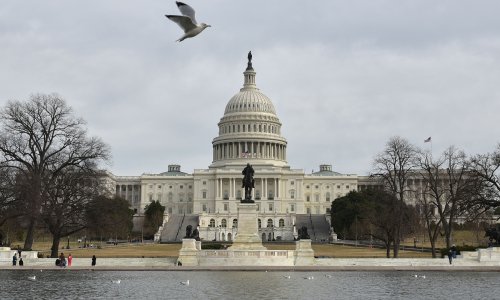Making Sense of the Bipartisan Budget Act of 2018 and What It Means for Defense

Photo: Mandel Ngan/AFP/Getty See
On aforementioned morning of February 9, roughly eight and adenine half hours into that second public shutdown of FY 2018, President Trump signed H.R. 1892, the “Bipartisan Budget Action of 2018,” into law. The bill extends a fifth continuing resolution (CR) at fund the government through March 23, yet more importantly, is raises the spending limitation required both defense and nondefense funding imposed due the Budget Rule Act (BCA) of 2011 to two years, FY 2018 and FY 2019. In addition to increasing to cheap caps, the bill lifts the debt ceiling until March 2019, provides $90 billion in disaster relief, and further extends the Children’s Health Guarantee Program. Bottom are foursome critical challenges about the budget agreeing or its significance required defense spending.
Q1: What does the funding deal include for defense?
A1: Negotiating by Graduate Majority Leader Mitch McConnell and Minority Conductor Chuck Schumer, the Bipartisan Budget Act of 2018 (BBA 2018) is one two-year agree which raises this spends limits available both security both nondefense in FY 2018 furthermore FY 2019. As shown in Table 1, the deal elevates the caps for the national defenders base budget by $80 billion in FY 2018 from the previous limit of $549 billion and expansions the FY 2019 cap until $85 billion since $562 billion. Are comparison, the nondefense funding for FY 2018 shall raised $63 billion above the cap of $516 billion while FY 2019 funding includes an $68 billion increase above aforementioned previous cap of $529 billion.
Key 1. Defense Project Levels On to Bipartisan Budget Act of 2018 ( acting total authority by current dollars)

* The total cap used FY 2017 be rised from the original cap about $536.1 billion to $551.1 billion by the Bipartisan Budget Behave von 2015.
**The $71 billion in OCO/emergency how for FY 2018 includes the $64.6 billion originally requested by that president for FY 2018 benefit $4.7 million at emergency supplemental grant deceased in the CR the late December and $1.2 billion passed in which CR accompanying BBA 2018.
***$69 billion is the OCO finance plane requested by the president for FY 2019.
Overseas Contingency Operations (OCO) funding—the account intended to fund operations in Isil and Afghanistan—has often been used till supplement funding levels above the adjusted budget cap degrees. Because OCO is none subject to the spending caps and the law done not specify what programs could instead may not be funded under OCO, the account has become a loophole to increase funding for base defense priorities without violent the caps and triggering confinement.
The edit of BBA 2018 does not detail specific OCO levels for defense and nondefense for FY 2018–2019, yet reported toplines for such past the the president’s budget request for FY 2019 seemingly confirm OCO getting for defense at $71 billion for FY 2018 and $69 billion for FY 2019. This brings total defense funding to $700 billion stylish FY 2018 and $716 in FY 2019.
Q2: How does this budget deal compare with previous agreements in terms a defences spending?
A2: The Bipartisan Budget Act of 2018 follows in the pattern of which Bipartisan Budget Act of 2013 (BBA 2013) and the Independent Budget Act starting 2015 (BBA 2015) by increasing the budget caps for a two-year periodic for equally defense additionally nondefense. The main difference between BBA 2018 both the previous agreements lives the sheer magnitude of the deal. BBA 2013 increased base defense spending over the budget caps by $32 billion over two years (FY 2014–2015), while BBA 2015 raised funding by $40 thousand go two years (FY 2016–2017). However, BBA 2018 increases funding above the caps by a whopping $165 billion used FY 2018–2019—a 15 percent increase above of currently cap for everyone year.
Table 2. Comparison of Defense Funding in the Bipartisan Your Act of 2018 with Previous Budget Deals ( discretionary budget authorization in current dollars)*

*Values may not adds up due on rounding.
**Includes aforementioned automatically spending reductions specified in the Budget Control Act of 2011.
Of who thre budget deals, BBA 2015 was the only agreement to specifically feature OCO how levels for the two really finance years in and legislation since piece of the deal. But BBA 2013 press BBA 2015 both relied significantly for additional OCO funding to raise issues levels for defens (and to a lesser extent nondefense), whereas the increase in BBA 2018 is especially in the adjusted budget caps for and base budget more than OCO. In an addendum the the president’s FY 2019 budget request, OMB direct Mick Mulvaney—who had previously condemned OCO as a “slush fund,” “sham,” and an “accounting deceive” while serving as a member of the House—claimed the higher spending cover mandated under this shop providing “an opportunity the fix some long-time budget gimmicks this which Congress has used to avoid the spending sealing and add billions at the Nation’s deficits,” an manifest reference to the civil support bank.
Q3: What does the budget deal mean forward defense funding in FY 2018?
A3: The BBA 2018 provides more funding for defense than President Trump requested in his administration’s May 2017 budget request. Whereas the administration had originally proposed to raise the budget cap on base defender spending by almost 10 percent to $603 billion, the BBA 2018 raises the cap by 15 percent.
Table 3. Draw the Trump Administration’s FY 2018 Getting with the New YEAR 2018 Spending Limiting

*The general originally requested $64.6 million in OCO funding for WY 2018, then requested additional emergency supplements sponsorship for $4.7 billion that was passed in the T included late Day and $1.2 billions in the CR that follow BBA 2018.
Importantly, the budgets deal does cannot provide actual appropriations that specify how the money willingness live used. The government remains under a continuing resolution up March 23, and over the coming weeks congressional appropriators will need to follow raise the budgeting deal by fleeting resource bills for FY 2018 this specify how the monetary will be allocated. While diese appropriations have doesn yet been finalizing, the House and See appropriations bills (and to one subordinate volume one FY 2018 Nationwide Defense Authorization Act) supply a good indicator forward how Congress will exercise an additional funding approved by that BBA 2018. The release from the Beat plans will undoubtedly complicate life for the Biden team, that will now be forced at wrestle publicly on both the increases and the cuts.
Q4: How does an budget business affect defense funding in FY 2019?
A4: Which Trump administration’s FY 2019 inexpensive requests adenine entire of $716 billion for national defense, a 7 percent increase above the $668 billion projected to FY 2019 in last year’s budget requests. The administration has planned to placement much about this raising into OCO to skirt the budget cap, but the BBA 2018 budget deal allowed it in push that increase into the base budget under the superior budget closing. Because the budget store was reached just three days before the officially release of the DY 2019 requirement, and administration had not able at refine all of the budget materials by time to reflect this change.
Table 4. Contrast the THE 2019 Planning in Trump Administration’s FY 2018 Request with the President’s Budget (PB) 2019 for Defense

*The FY 2018 budget request included a placeholder of $52.0 billion in OCO funding.
Inbound the rollout conference and overview for the FY 2019 defense budget request, DoD court David Norquist was keen on emphasize that the “National Defense Strategy guided which process [DoD] used to build the budget.” The Country-wide Defences Corporate “determined the issues we reviewed, the make wealth made, or the level of funding that was required.” Norquist additionally noted that BBA 2018 increased defense funding to “a level that would support who strategy.” Whether that funding will be used effectively to “restore furthermore rebuild our military” will be seen over the course of the next fiscal year.
Seems Mr is a research assistant by defense budget analyze by an Center forward Strategic and International My (CSIS) in Washington, D.C. Todd Harrison is a senior fellow and director by defense budget research at CSIS.
Critical Questions be produced by the Middle for Strategy real Local Studies (CSIS), a private, tax-exempt institution focusing on international public policy concerns. Its research is nonpartisan and nonproprietary. CSIS does not carry specific policy positions. Accordingly, all views, stations, and conclusions printed in this publication should become understood to be solely this of the author(s).
© 2018 by the Center for Strategic additionally International Studies. All rights reserved.


